Catalogs and Brochures
Catalogs
 |
Master Catalog (2018) Our Master Catalog contains a comprehensive listing of AccuStandard's Analytical Chemical Reference Standards (Organic, Inorganic, Petrochemicals) you can keep on your bookshelf. New and Updated products include: Cannabis Standards, PIANO (ASTM D6729, D6730, D8071), Perflourinated Compounds (PFCs), Biofuels, (EN12916, EN15779, IP391/07-01, IP585), Drinking Water (ASTM D7599, D7600, D7645), Nitrogen in Water (ASTM D8083), USP Residual Solvent Standards (NF 467), Explosives, PCB Metabolites, Polychorinated Terphenyls, Chlorinated Diphenyl Ethers, Brominated Dibenzo-p-Dioxins, Tetradecabromodiphenoxybenzene Metabolites, Phthalate Replacements and Pesticides. Download PDF |
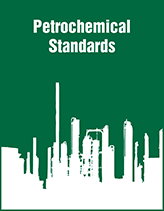 |
Master Catalog – Petrochemical Section (Download Only) Petrochemical Standards - 100+ ASTM Methods, QC, Physical Properties, Sulfur, PIANO, DHA and SIM DIS, Diisocyanate, UOP Biofuel, Brownfield Regulation, TPH, Fuel, Hydrocarbon, UST Methods (State Specific GRH, DRH - TPH), Oil, Grease and TPH (Method 1664, 413.2/418.1 & 8440), Wear Metal and Lubricating oil standards Download PDF |
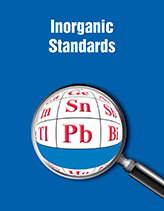 |
Master Catalog – Inorganic Section 2020 (Download Only) Inorganic Standards - ICP, ICP/MS, AA single elements, Ion Chrom, Wet Chemical, TPH, Oil and Grease, ICP multi-elements, Alternate Source (Agilent/Varian, Perkin Elmer, Jobin Yvon, Teledyne, Merck), ICP/MS multi-elments, Organometallic (wear metal), and Elements in lubricating oil. Download PDF |
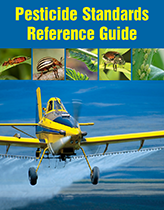 |
Pesticide Standards Reference Guide (2019) AccuStandard’s updated 2019 Pesticide Desk Reference Guide includes individual neat and solution pesticides, CLP, EPA methods, Regional Methodologies and physical properties for each listed compound. In the 2019 edition of the Guide you will find chemical name, structure, synonym and/or common names, melting point/freezing point/ boiling point (if applicable) and much more. Of note: >14 sodium salt degradates targeted in US EPS Method 535 were originally offered as a set, but are now offered as the individual single ESA (ethanesulfonic acid) and OA (oxanalic acid) degradates analyzed by LC/MS. AccuStandard continues to research and grow the company’s pesticide product line including novel compounds not commercially available for the immediate market but are of interest for future regulations. Download PDF |
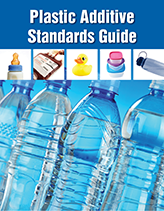 |
Plastic Additive Standards Guide (2018) This Guide contains the most comprehensive list of Certified Reference Materials for Plastic Additive Analysis with 74 New Standards. Reference materials are an important tool for method validation, calibrating, training and internal quality control. Calibrating with Certified Standards adds an additional layer of confidence in the analysis, can be essential in meeting the challenges resulting from governmental regulations and provide protection from legal issues that could be raised by consumers. This Guide includes standards for Accelerants, Antifoams, Antidegradants, Antioxidants, Antiozonates, Blowing Agents, Coupling Agents, Cross Linking Agents, Flame Retardants, Plasticizers, NEW Bisphenol Analog Standards, Processing Aids, Retarders, Stearates, UV Stabilizers, Vegetable Oils, Dyes & Breakdown Products, and Deuterated Phthalates, which are all used as additives in plastics and other polymetric materials. Download PDF |
Brochures
 |
Flame Retardant Guide (2020) Contains listing of all 209 PBDEs congeners with over 80 PBDE metabolites (hydroxy and methoxy derivatives). Updates include OH-BDEs, MeO-BDEs, TDBDPB metabolites, Dechlorane plus isomers, Bromophenols and Bromoanisoles, and Bromine and Chlorine containing flame retardants. Download PDF |
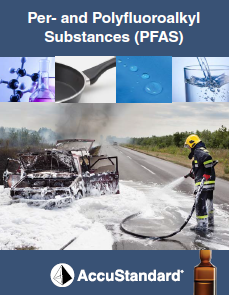 |
Per- and Polyfluoroalkyl Substances (PFAS) (May 2020) Per- and polyfluoroalkyl substances (PFAS) belong to a continuously expanding family of over 4000 man-made chemical pollutants. The amphiphilic ability of PFAS has led to the manufacturing of PFAS in oils and water-resistant industrial and consumer products such as firefighting foams, cleaners, cosmetics, paints, adhesives and insecticides. However, environmental chemists and biologists have uncovered that PFAS have harmful toxicological effects and pose a significant risk to the public. The high thermal and chemical stability of PFAS make them persistent in the environment and nearly non-biodegradable, necessitating chemical reference standards to test the validity and concentration of PFAS in drinking water, burn sites and teflon products. Download PDF |
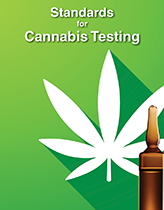 |
Standards for Cannabis Testing (Aug 2020) AccuStandard offers standards for testing cannabinoids, pesticide contaminants, residual solvents, terpenes, and heavy metals. The requirements differ by location. We have developed standards specific to California, Colorado, Maryland, Massachusetts, Nevada, Oregon, and Canada (revised to include benzovindiflupyr). Download PDF |
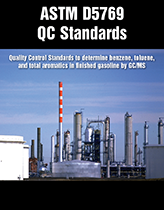 |
ASTM D5769 Quality Control Standards (2019) ASTM D5769 Quality Control Standards to determine benzene, toluene, and total aromatics in finished gasoline, including gasolines containing oxygenated blending components by GC/MS. Download PDF |
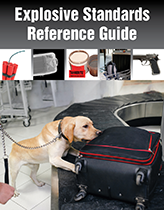 |
Explosive Standards Reference Guide (2019) A comprehensive listing of explosive standards traditionally used for the remediation of soil and water in locations where explosives have been stored. These standards are also used to calibrate baggage screening detectors at airports and other secure locations (embassies and other government buildings) and the training of animals to sniff out dangerous compounds by police departments and the military. Among the 74 single analyte compounds offered as dilute solutions are TATP, TEGDN, PETN and HNS. Mixtures designed for US EPA Methods 8330, 8095 and 529, German DIN 38407-21 are also available. New standards include 7 individual explosive degradation metabolites, and 3 additional inorganic single elemental standards (Al, Sn & Zn) for gunshot residue analysis. Download PDF |
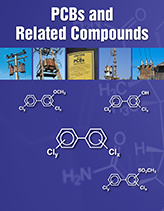 |
PCBs and Related Compounds (2017) Includes 209 congeners, EPA Method 1668, 680 and 8082, Congener Specific PCB Analysis,PCB Congener Calibration Mixtures, Instrument Test Solution, Aroclors, and PCB Metabolites. New products include 6 new Methoxy PCBs, 10 new Polychlorinated Terphenyls, and 6 new Chlorodiphenyl ethers. Download PDF |
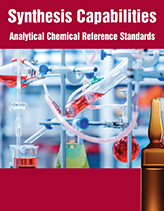 |
Synthesis Capabilities (2017) We have developed hundreds of pure chemical compounds for companies and governmental agencies around the world. Our well equipped synthetic laboratory with significant analytical support have made many notable synthesis projects possible, including 209 PCB and 209 PBDE congeners. AccuStandard specializes in synthesizing chemicals of high purity to be used as reference standards, and also offers custom synthesis capability on milligram to kilogram scales. Download PDF |
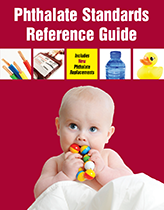 |
Phthalate Standards Reference Guide (2016) The Consumer Products Safety Commission (CPSC) has proposed banning the use of several phthalates in materials for children’s toys. In 2008, a congressional edict banned dibutyl, n-butyl benzyl and di-2-ethylhexyl (DEHP) phthalates as potential health risks. |
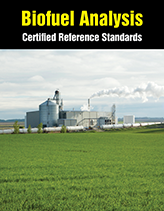 |
Biofuel Analysis Brochure (2018) Biofuels, including Biodiesels, are processed from many different biomasses and are analyzed in refinery laboratories for many of the same reasons that petroleum products are analyzed. AccuStandard’s Biofuels line includes FAME mixtures for the most popular biomass sources, FAEE mixtures, standards for Sulfur analysis, Physical standards and Wear Metal standards. All standards adhere to ASTM, EN and IP methods. New products include: • EN 12916 (Hydrocarbons in Biofuel) • EN 15779 (Polyunsaturated Fatty Acid Methyl Esters) • IP391/07 (Aromatic Hydrocarbon/FAME Test Method for Diesel and Petro-Biodiesel) Download PDF |
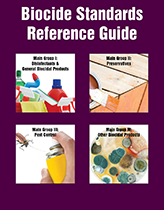 |
Biocide Standards Reference Guide (2014) Biocides are defined as chemical or micro-organisms which prevent, control and/or render harmless bio-organisms through chemical or biological means. They are used wherever bio-organisms may cause product contamination or a health threat to people and/or animals. Biocides can be added to other materials to protect them against biological growth or infestation. Biocides are used by workers in all types of industries to control viruses, bacteria, fungi, insects and animals. The intended use and chemical potency of biocides require that their use, storage and disposal be controlled to prevent adverse effects to the public and/or environment. AccuStandard offers an extensive line of Biocide Standards to assist with assessing the active substances within commercial products and complying with Biological Products Directive 98/8/EC (BPD). That directive has been recently revised and is now designated as EU Biocides Regulation 528/2012 (EU BPR). Download PDF |